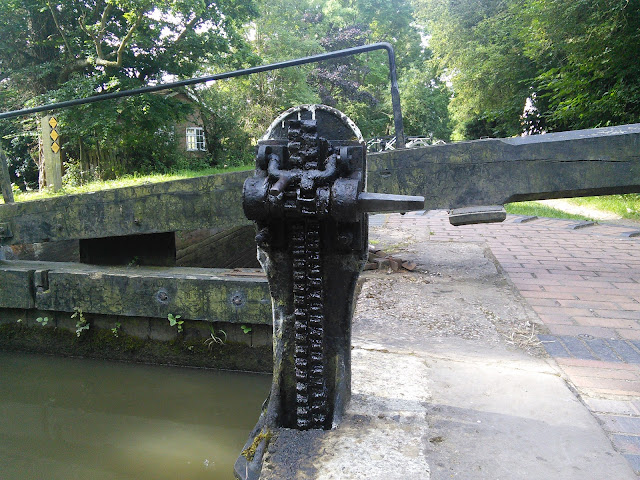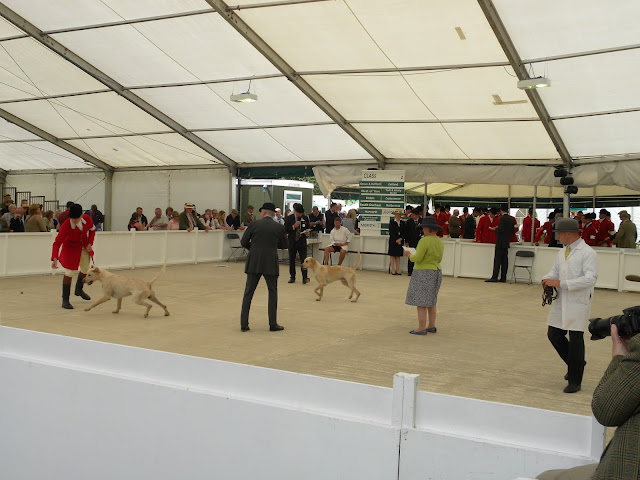How to operate a lock on a canal
A lock is a place on a canal that is like a step so the boats can move onto a different level on the canal because canals can’t go downhill like a river, they have to stay level.
A lock has 2 gates, one at each end. The gates keep the water in and let the water
out.
When your boat approaches a lock you have to check inside the
lock to see if the water is on the same level as your boat. If it isn’t, you have to let the paddles up
on one gate so that the lock can fill or empty to the same level as the bit of
canal that you are on. If the water is already at the same level as your boat,
you can open the gate and enter the lock straight away.
This is how you operate the lock if you are going up.
The boat has to let you off and you make sure there is no
boat coming in the other direction that is closer. If there is, you have to
help them work the lock.
 |
| This boat has let someone off at the side of the canal so they can operate the lock. |
When you get off your boat you have to take your windlass
with you. The windlass has 2 different sized holes in it to operate the turning
gear on the gate. There are 2 holes because some locks have different
sized spindles.
Sometimes the mechanism for the paddles is on the gate and sometimes it is on the side of the canal.
 |
| This is a windlass |
Sometimes the mechanism for the paddles is on the gate and sometimes it is on the side of the canal.
 |
| This picture shows the paddle gears on the lock gate. |
 |
| This paddle gear is on the side of the lock. |
 |
| this is the windlass operating the paddle |
These are the gears when the paddles are all the way up.
Once the water is level inside and outside the lock you can push the gate open. You push on the beam with your back and your feet can grip onto the bricks that stick out of the platform. There are lots of different designs of grips but they all work the same way. The lock gates are very heavy. They weigh over 2 tonnes.
Once the water is level inside and outside the lock you can push the gate open. You push on the beam with your back and your feet can grip onto the bricks that stick out of the platform. There are lots of different designs of grips but they all work the same way. The lock gates are very heavy. They weigh over 2 tonnes.
 |
| This is the gate open so the boat can enter the bottom of the lock |
The locks on our canal which is the Stratford canal, are single gated locks which means there can only be one boat in the lock at once. Some locks are double gated so these locks can fit 2 narrowboats at the same time.
When the boat is all the way in, you close the gate behind
it. Before you close it you let the paddles back down using your windlass. It is important not to drop the paddles, you have to wind them back down.
The boat is now inside the lock but low down. To get the boat out the other side, you have to raise the boat to the upper level of the canal. To do this, you have to let the water in again.
You walk to the upper gate and use your windlass to turn
the spindle until the paddles under the water have risen and the water starts filling into the lock. (if you were going downhill, the paddles would be letting the water out of lock instead.)
You have to be careful that the water doesn't rush in too fast or it can flood the boat.
You have to be careful that the water doesn't rush in too fast or it can flood the boat.
 |
| It can be very hard work to open and close the paddles |
When the boat first enters the lock it is very low down. The top of the boat is level with the top of the lock. Now you will see the boat start to rise up as the water comes in. This is a single lock so the water rises quite quickly. In a big lock it can take 3 or 4 minutes to fill the lock.
In the pictures below you can see the boat getting higher and higher as the water level rises.
You know when the gate is ready to open, because the water level is the same on both sides of the gate. If you try to open the gate too early, it won't budge because the water pressure is so strong.
Once the lock is full, you can push the gate open like this, which will let the boat out of the lock.
 |
| this is Holly pushing the gate open with her back. You can see the little steps on the platform that help stop you from slipping. If it is raining, the platform can be VERY slippery. |
 |
| The gate is open and the boat is on the way out. |
Now the boat can leave the lock and you lower the paddles and close the gate again.
You always leave the lock gates shut, unless there is another boat ready to enter the lock.
Once it is out of the lock, the boat will wait for you to close the gate and then you can hop back on and continue up the canal. If there are a few locks close together sometimes people just walk to the next lock. Narrowboats are not allowed to go faster than 4km per hour, so you can usually walk faster than the boat.
 |
| while the boat is leaving, Holly is lowering the paddles again with her windlass |
 |
| Pushing together to close the gate after the boat has left. |
Sometimes people drop their windlasses into the canal, especially at locks. Some people get a very strong magnet on the end of a rope and they drop it into the canal and go fishing for windlasses. One man we met had collected about 400 windlasses!
Sometimes when the canal has to go up steeply, there can be lots of locks close together. This is called a flight of locks and depending on how many there are, it can take hours to get through them all.
We hope have enjoyed reading about how to work a lock. It is hard work but good fun and you get to meet lots of lovely people on the canal.






















































